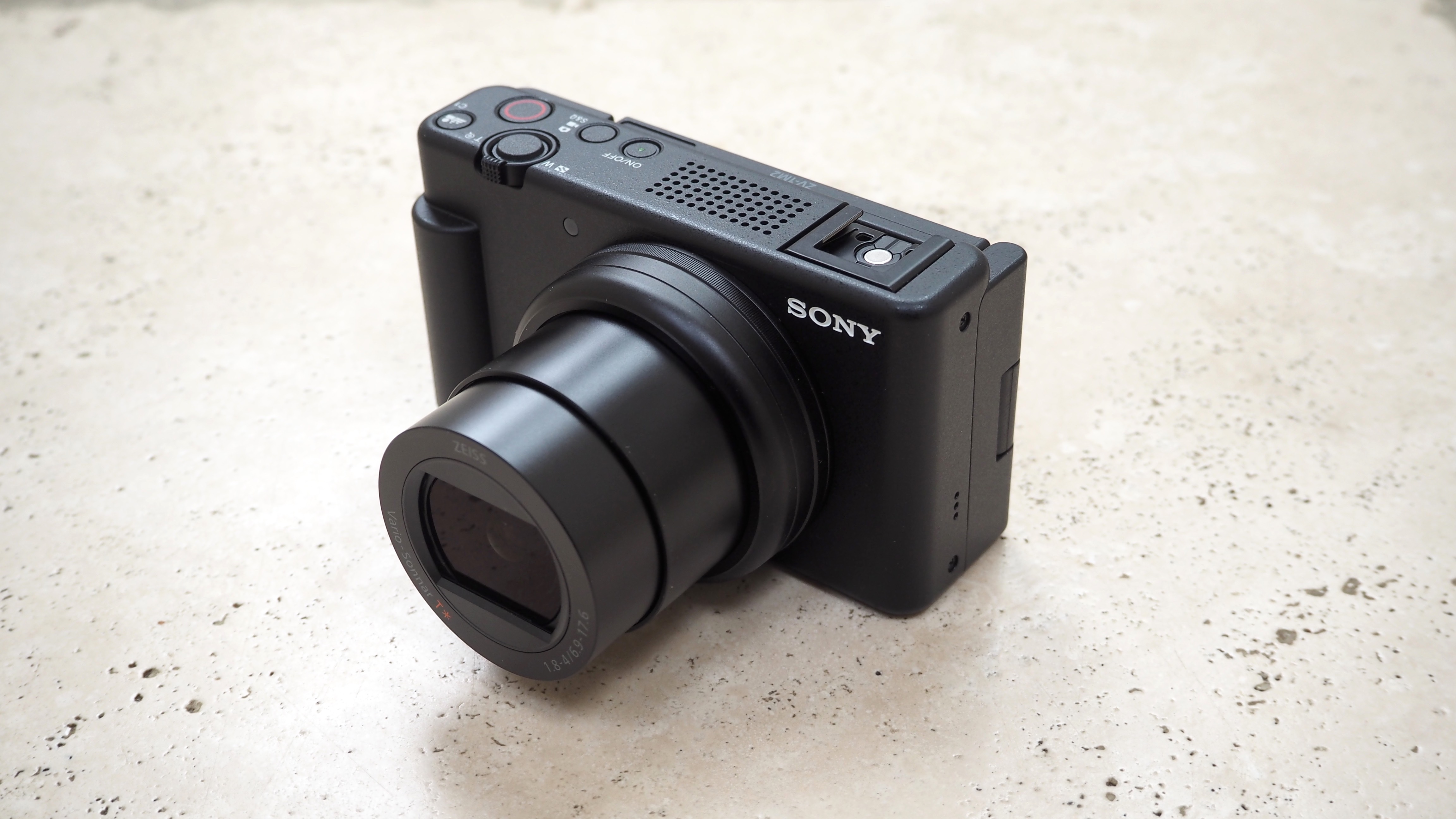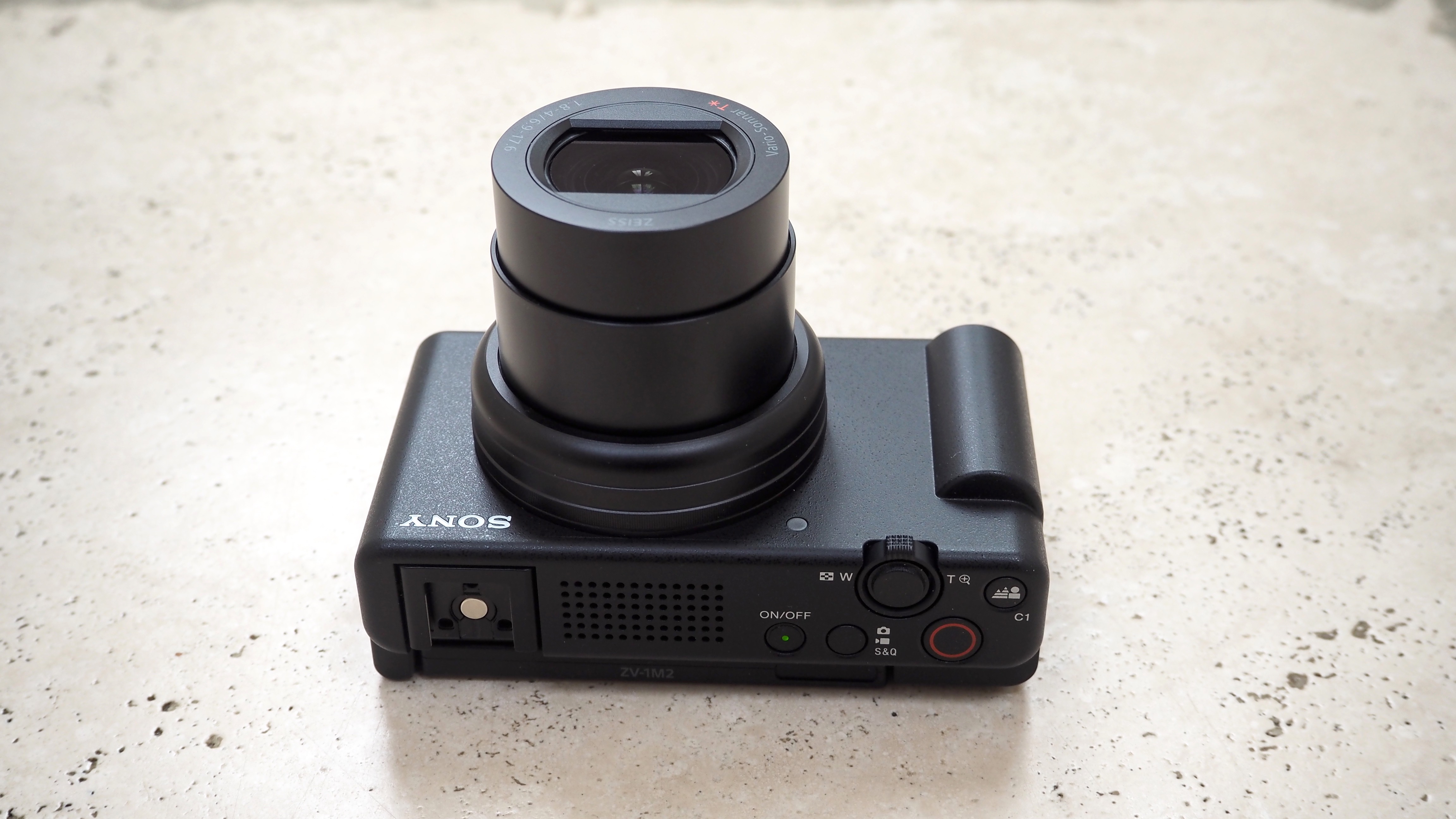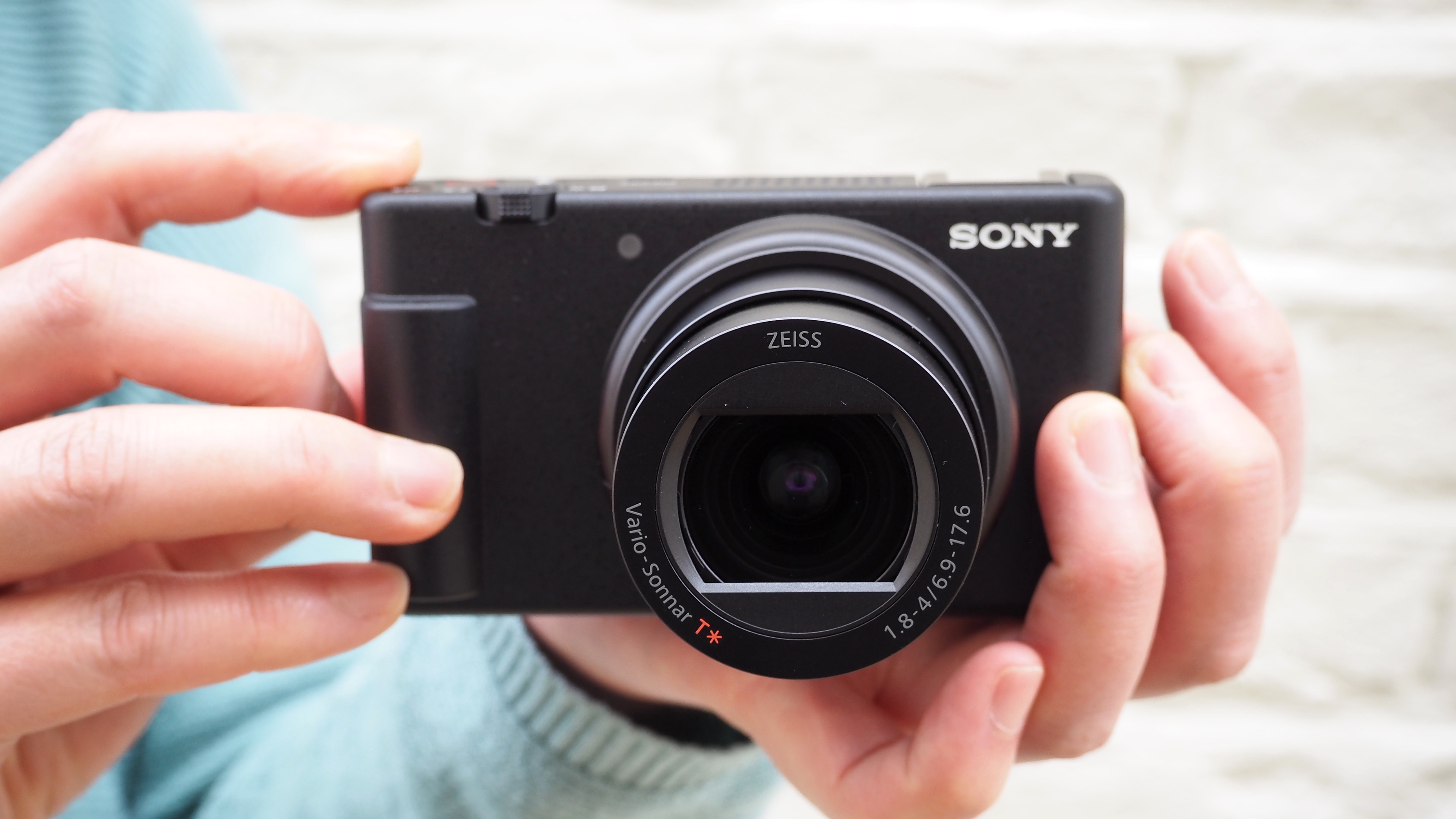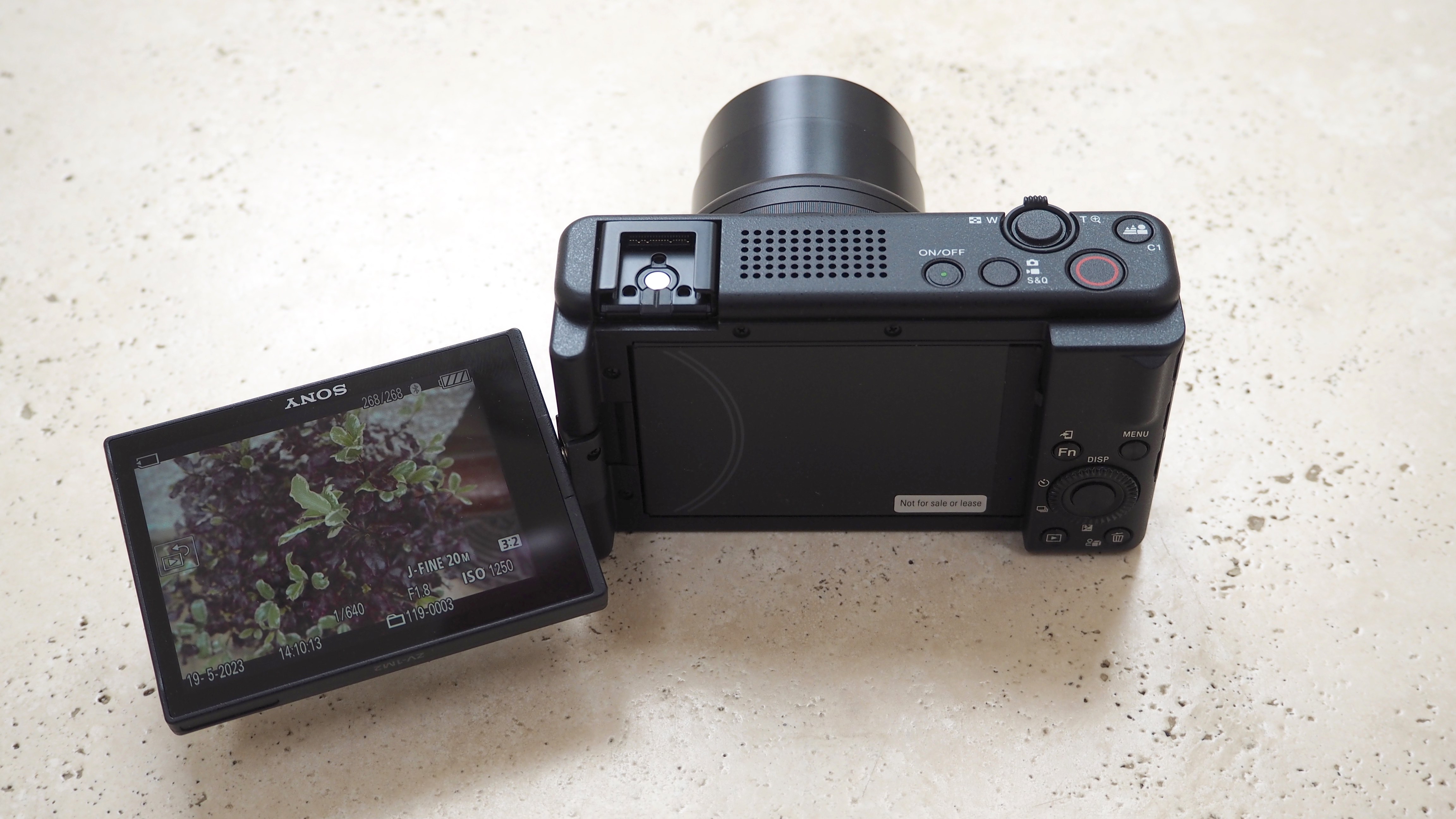The Sony ZV-1 II has the lens vloggers wanted all along – at a price

The Sony ZV-1 sits pretty in top spot of our best vlogging camera guide, and three years after its launch its successor has arrived in the shape of the Sony ZV-1 II.
According to Sony, users of the Sony ZV-1 fed back that its lens is often not quite wide enough for vlogging, and as a result the latest model features an all-new lens with a wider field of view.
So what else is new in this compact entry-level vlogging camera? Let's dig further into the ZV-1 II's headline features to find out.
Sony ZV-1 II price and release date
- $899 / £870 / AU$1,499 in the US, the UK and Australia
- Available from June 2023
- Also available as vlogging kit with GP-VPT2BT grip
The Sony ZV-1 II is available on its own, or as part of vlogging kit, with the basic kit including Sony’s GP-VPT2BT grip, which costs $138 / £170 / AU$249 if bought separately.
Disappointingly, the Sony ZV-1 II's list price is quite a lot higher than that of the ZV-1 at launch, which was $749 / £699 / AU$1,299, perhaps due to the current global economic situation.
For now, Sony plans to keep the ZV-1 on the shelves alongside the ZV-1 II, in addition to the ZV-1F, which has a fixed 20mm F2.0 lens, and we've written a Sony ZV-1 Vs Sony ZV-1 II head-to-head to highlight the key differences.

Sony ZV-1 II lens: Wide-angle wonder
- Built-in 18-50mm F1.8-4.0 lens
- 2x zoom rocker extends focal length to 100mm
During a briefing on the new camera, Sony told us that a wider lens topped the wishlist of ZV-1 users, who indicated that the widest 24mm focal length often proved to be not quite wide enough for vlogging. Thus, we have a new lens in the ZV-1 II.
Sign up for breaking news, reviews, opinion, top tech deals, and more.
That camera features a 24-70mm F1.8-2.8 lens, whereas the ZV1-II has a much wider 18-50mm F1.8-4 lens that gives more space around the creator who’s self-shooting. The ZV-1F has a fixed 20mm lens, which makes a lot of sense for vlogging, but you don’t get the same versatility for b-roll pickups that a zoom lens gives.
You’ll notice that the telephoto end of the new lens doesn’t extend as far as the ZV-1’s, though, plus the maximum aperture is smaller which could adversely impact image quality in low light. However, the ZV-1 II does also feature a zoom rocker that offers a 2x Clear Image zoom to extend the maximum reach of the lens to 100mm. It’s not an optical zoom, but from experience we’ve never really noticed a drop-off in video quality when using the Clear Image zoom.

None of these compact vlogging cameras feature in-body image stabilization, and those that want to smooth out walking vlogs without being bogged down by a gimbal will need to use electronic stabilization, which introduces a small crop of the image area – another case for this wider lens.
Lens choice is critical because you can’t swap out the built-in lens of these cameras. If we were to pick one of the ZV-1, ZV-1F or ZV-1 II on lens design alone, the ZV-1 II makes the most sense for vlogging.
Sony ZV-1 II specs and features: Familiar ground
- 1-inch 20MP sensor
- Improved touchscreen function
- Multi-directional built-in mic
Next up on notable changes from the ZV-1 is a fully touch capable screen. It might not sound like a big deal, but for such a small camera whose function relies so heavily on the screen, the limits on the ZV-1 screen were a real downer. Be aware that the ZV-1F already offers full touch function.
The built-in 3-capsule microphone has been tweaked too, and users can now select sound from the front, the rear or auto, while the microphone in the other ZV-1 cameras is auto only. It’s ultimately like having a directional mic and can be useful for scenarios where you know the direction you want to prioritize sound from, but from using this function in the ZV-E1, we're not 100% convinced it’s notably better than the auto setting.

Sony has also rolled out the ‘cinematic vlog setting’ as found in its flagship vlogging camera the Sony ZV-E1, that gives a choice of baked in color presets instead of fiddling around in post. The feature actually makes a lot more sense in this compact camera suited to users of all skill levels – choose how you like the video to look in-camera and shoot, job done.
The USB port has been updated from micro USB in the ZV-1, too, to USB-C here. Otherwise, there’s not a lot else to report. All three of these ZV-1 cameras are virtually the same size and dimensions, utilize Sony’s 1-inch sensor and same generation BIONZ X processor, with 20MP JPEGs and 4K / 30p 8-bit video. Independent of the lens, image and video quality is the same.

Is the Sony ZV-1 II worth it?
For real world use, the tech in the ZV-1 II is largely unchanged from the ZV-1, save perhaps for the touchscreen. Really, this is all about the new lens, and certainly it’s the most versatile lens of the three ZV-1 cameras for vlogging. Is the price hike justified for a new lens? Debatable. But you'll be able to find out more when our full review of the ZV-1 II lands soon.

Tim is the Cameras editor at TechRadar. He has enjoyed more than 15 years in the photo video industry with most of those in the world of tech journalism. During his time as Deputy Technical Editor with Amateur Photographer, as a freelancer and consequently editor at Tech Radar, Tim has developed a deeply technical knowledge and practical experience with cameras, educating others through news, reviews and features. He’s also worked in video production for Studio 44 with clients including Canon, and volunteers his spare time to consult a non-profit, diverse stories team based in Nairobi. Tim is curious, a keen creative, avid footballer and runner, and moderate flat white drinker who has lived in Kenya and believes we have much to enjoy and learn from each other.